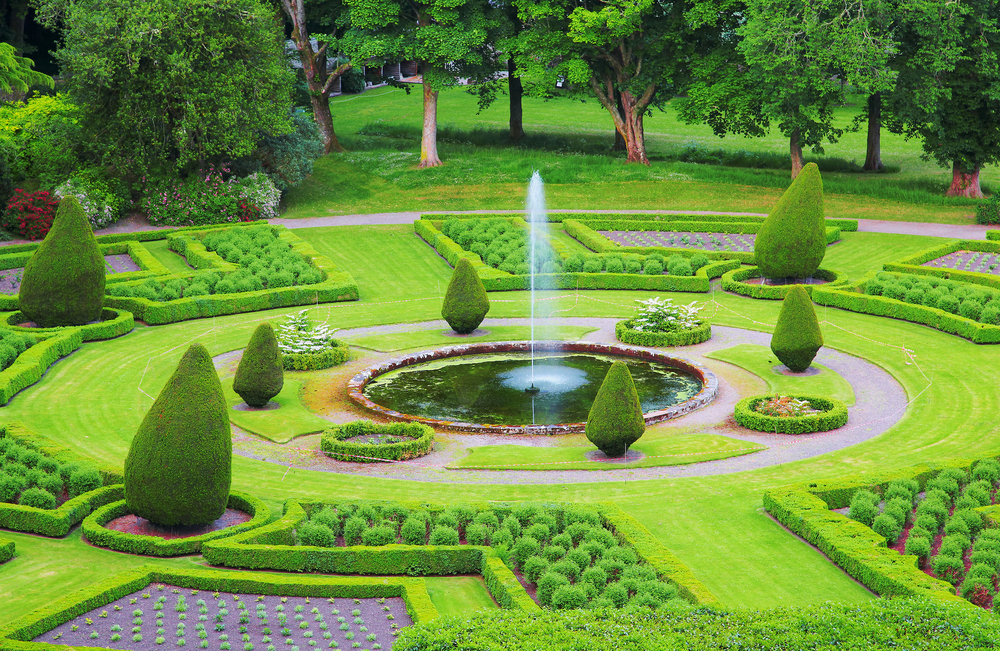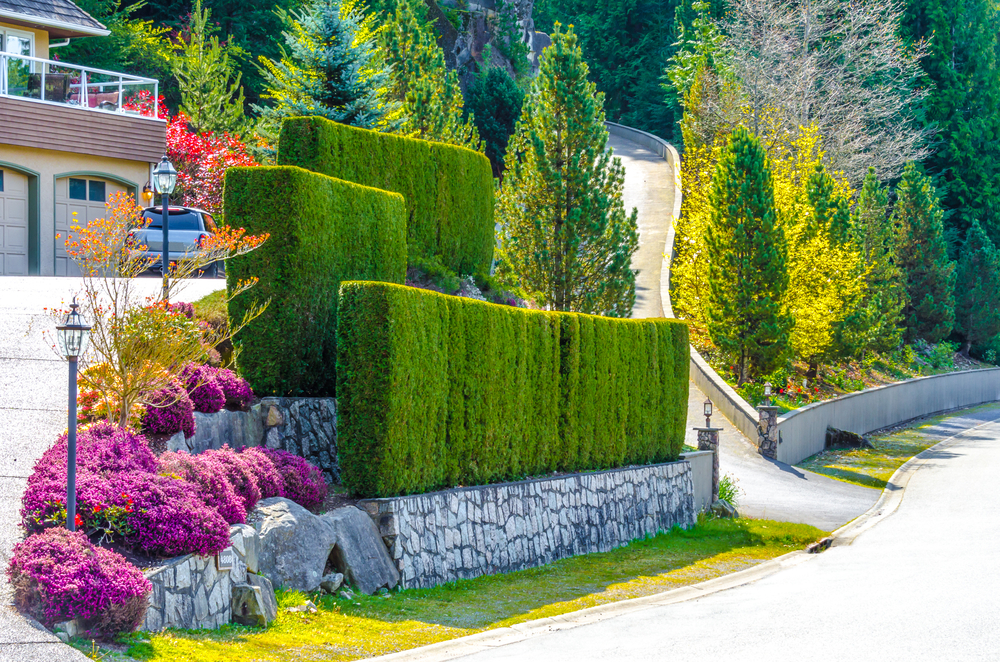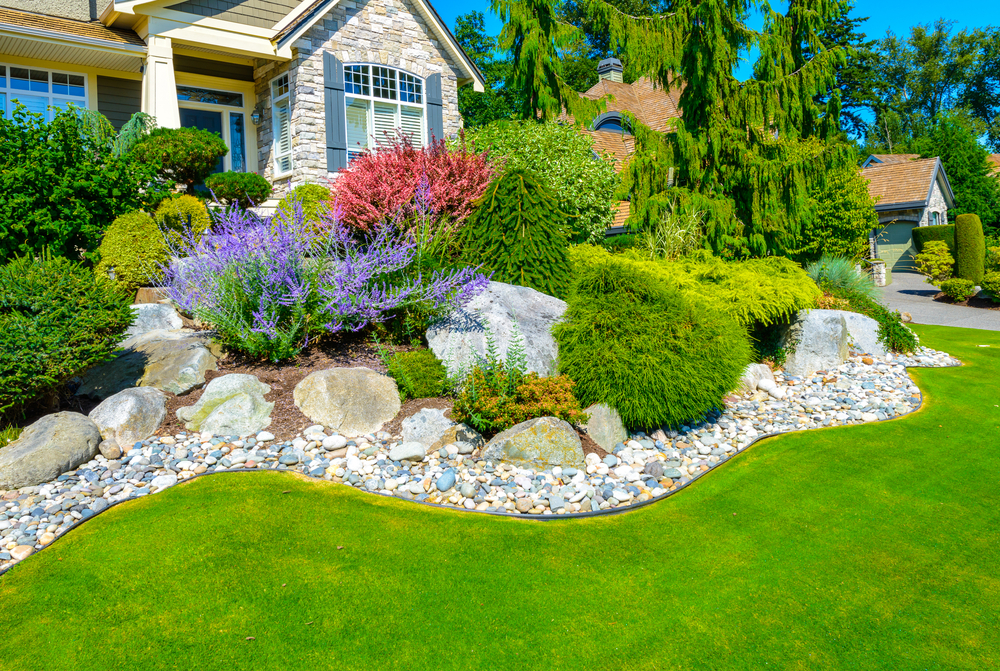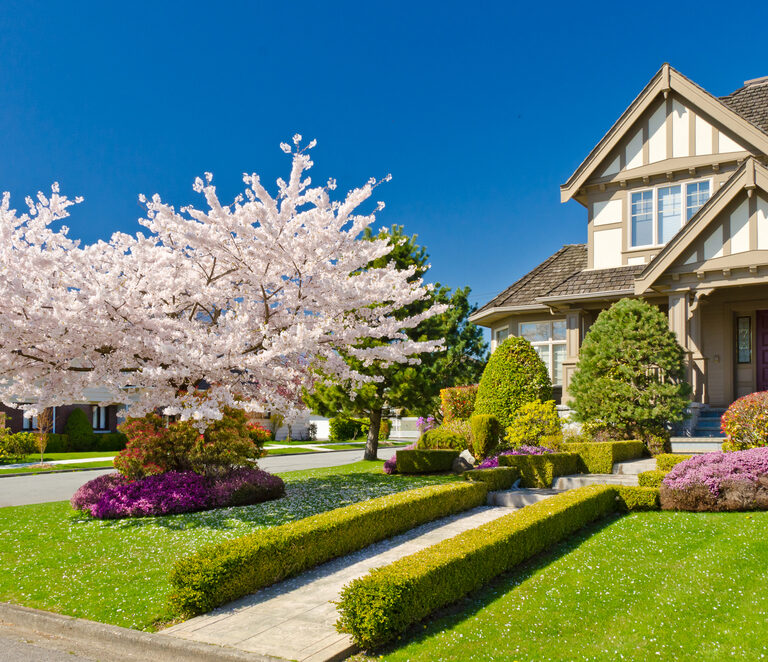There’s no doubt that landscaping your front yard is the best way to increase your home’s curb appeal. However, there’s more to landscaping than a properly-maintained lawn; there’s a wide variety of things that’ll need your attention. And making everything look pretty is just half of it—every aspect of your landscape also needs to be functional.
Here, we’ll teach you how to landscape your front yard, and how to do it so that everything makes sense and serves its purpose.
Finish Your Hardscaping Projects First
Hardscape refers to the hard, man-made features in a yard, including the driveway, the porch, pathways and walkways, the patio, and the pool.
You don’t need to finish all of them before proceeding to the next step, but you’ll need to finish the essentials first, such as your driveway and your walkways. This is because hardscaping normally involves construction, which could potentially damage your softscape or the growing stuff like trees, flowers, and shrubs.
Driveway
Visibility and convenience are the main things to think about when it comes to landscaping your driveway. The driveway has to be visible and be without obstructions (like trees and shrubs), so it’ll be easy to turn into the drive.
You’ll also want to add lights to the driveway—as well as the path from the drive to the walk—for added visibility when it’s dark. Lastly, make sure there’s enough room for you to get out of the car without stepping on the plantings.
Walkways
When deciding between a straight walkway and a curved walkway, think about which one you value more: aesthetics or functionality. If you prefer the appeal of curved walkways, then go for them. Just know that straight walkways are often the more sensible option; plus they’re shorter, which means they’re not as costly to build.
You’ll also want to make sure your walkways are intuitive. It’ll help your guests figure out which door to approach from the street. It will also help prevent your kids or dogs from making their own paths and destroying your precious softscape.
Ideally, walkways should be at least 36 inches wide to accommodate one person comfortably, but if you have the space, up to 54 inches would be better as it’d allow two people to walk side by side. Also, make sure you don’t plant anything too close to your walkways to avoid shrinking the walking space.
Front Door and Steps
The front door should be the focal point of your front yard. You can highlight the door using plantings and garden ornaments, but make sure they don’t end up hiding the door instead.
As for the front steps, they should be noticeable and should be the same width as the walkway they connect to. Ideally, you’ll want at least three steps, but two may be good enough.
Design Your Garden
If you just want to landscape the front of your house, foundation plants will be more than enough, if done right. However, if you want to go the extra mile, and if you have the space for it, you could create a garden in your front yard.
Starting a garden from scratch isn’t easy since the possibilities are literally endless. It would be easier and faster to choose a style or a theme instead of combining random elements.
Formal or Informal
Formal gardens are characterized by geometric shapes and a symmetrical layout.

Many of the royal gardens shown in movies and TV shows feature a formal design. Informal gardens, on the other hand, utilize free-flowing elements. You’re going to have to pick one or the other since using elements of both designs will just result in a discordant look.
Garden Style
There’s a wide variety of garden styles to choose from.
Some of your options are:
- Japanese theme
- Gravel and rock garden
- Mediterranean theme
- Modern theme
- Cottage garden
- Desert theme
- Tropical theme
Make sure to pick a style that will work well with your house’s architecture.
Plan the Landscape Layout
Part of learning how to landscape front yards is learning how to plan a landscape layout. This isn’t as simple as drawing a map and marking the locations for every element. You also need to think about why they should be placed in their respective locations.
Sunlight
Your plant and tree options will vary depending on what direction your house is facing. If your house is facing north, you’ll need to choose plants that can survive with little sunlight. If your house is facing east, you’ll want plants that enjoy full sun.
Privacy
If you want your front yard to be as inviting as possible, a more open layout would be better. However, if you care more about blocking out prying eyes, you’ll need to make use of landscaping elements that will effectively and beautifully hide your front yard.
Building a fence around your property, like a lattice fence, is one option, although it very strongly says “Keep Out.” It can also lead to disputes with your neighbors, so make sure you talk to them about your plan before you start erecting the fence.
Another option is to create a living fence using shrubs or small evergreen trees. A row of trees or shrubs at varying heights will create a more welcoming atmosphere than at a uniform height.
Borders
Privacy isn’t the only reason that people build fences around their property; fences can also serve an aesthetic purpose. Not only can they efficiently define a property and neatly outline your yard, but they also add elements of contrasting form and color.
And as mentioned earlier, you’re not restricted to using wooden or metal fences. You can plant living borders, including flowers and ground covers, as well as tall shrubs. If you decide to go with this option, make sure the plants have plenty of room to grow. If you’re planting shrubs or trees, you shouldn’t plant them too close to walkways.

Consider Your Tree and Plant Choices
Another important aspect of learning how to landscape front yards is learning what plants, trees, and shrubs to plant. Instead of arbitrarily choosing what trees and plants to plant, your decision should be made based on their visual appeal and how they will look all year, shade and energy control, and whether you want them to separate functional areas or mark boundaries.
Plantings of different forms, textures, and leaf sizes and shapes would make for a more aesthetically pleasing landscape than plantings that all look the same. You should also make sure that the colors of the plants you choose go well together.

Trees
You should take some time to map out where to plant trees instead of planting them in random places and planning your landscape around them. You have to be absolutely sure you’ll still want them there in the next decade or two, because cutting them down could be expensive depending on their size.
You also don’t want them too close to your house. They could fall on and damage your house in extreme weather.
Weeping trees are one of the more popular options for front yard landscaping, but they may not be the best option if you have a small front yard.
Good options for small yards include:
- Crabapple trees
- The royal star magnolia
- Japanese maples
If you have a big yard, your options include:
- Oak trees
- Red maple trees
- River birch trees
- Sugar maples
Foundation Plantings
Foundation plantings can significantly enhance how your front yard looks. You may not even need to do anything else if you do this right.
If you have a two-story house, they should extend eight feet or more from the house. If you have low windows, plant ground cover or low-growing shrubs. You should also consider planting flowers to inject color into your foundation plantings.
Ground Cover Instead of Grass
Lawns require a lot of work, especially if you have a big yard, so you might want to consider planting ground covers instead of grass.
Ground covers need very little maintenance, and they’re a good way to add spring bulbs to the front yard since they hide dead leaves. You’ll also never have to use a lawn mower ever again.
Finishing Touches
You could leave your front yard the way it is once your hardscape and softscape projects are done, but it would be better to add some finishing touches to add your own flair.
Installing garden ornaments like a birdhouse, a birdbath, a water feature, or some statues would be a good start.
Wrapping Up
Landscaping your front yard isn’t an easy task. It will require a lot of work and may even cost you a lot of money, but once you see the results of your hard work and see how lovely your property has become, you’ll see it was all worth it. Plus, it can increase your property’s value by up to 12%, so you might even make all the money you lost back if you sell your house.
Either way, you’ll have an envy-inducing front yard you and your family will enjoy for a long time.
